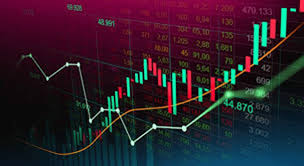- No Products In The Cart
- start shopping
Understanding Forex Trading A Comprehensive Guide 1769268188

What is Forex Trading?
Forex trading, or foreign exchange trading, is the process of buying and selling currencies on the global financial market. It is the largest financial market in the world, with a daily trading volume exceeding $6 trillion. Forex trading involves speculating on the value of one currency against another, and it operates 24 hours a day, five days a week. Traders engage in Forex for various reasons, including profit generation, hedging against currency risk, and international trade facilitation. For in-depth insights into Forex, you can visit what is forex trading https://acev.io/.
How Does Forex Trading Work?
At its core, Forex trading involves the simultaneous buying of one currency and selling of another. Currencies are quoted in pairs, such as EUR/USD (euro/US dollar) or GBP/JPY (British pound/Japanese yen). The first currency in a pair is known as the base currency, while the second currency is the quote currency. The exchange rate indicates how much of the quote currency is needed to purchase one unit of the base currency. For example, if the EUR/USD exchange rate is 1.20, it means 1 euro can be exchanged for 1.20 US dollars.
Forex trading can be performed through various methods, including spot trading, forward contracts, and futures contracts. Spot trading involves the immediate exchange of currencies at the current market rate. Forward contracts, on the other hand, enable traders to lock in a specific exchange rate for a future date, while futures contracts are standardized agreements traded on exchanges. Traders can also use leverage, which allows them to control larger positions with a smaller amount of capital, amplifying their potential gains (and losses).
Key Participants in the Forex Market
The Forex market is made up of various participants, each with different motivations and strategies:
- Banks and Financial Institutions: Major banks and financial institutions are the backbone of the Forex market, facilitating currency trading on behalf of clients and engaging in trading for profit.
- Central Banks: Central banks intervene in the Forex market to influence national currency values and maintain economic stability.
- Corporations: Businesses engage in Forex trading to hedge against currency risk when conducting international transactions, ensuring they can predict costs in their home currency.
- Retail Traders: Individual traders participate in the Forex market through online trading platforms, using their capital to speculate on currency movements.
- Hedge Funds and Investment Firms: These entities conduct large-scale trades and strategies to maximize returns, often engaging in speculative trading.
Types of Forex Orders
When trading in the Forex market, traders can use various types of orders to execute their trades. Understanding these orders is crucial for effective trading strategies. The most common types of Forex orders include:
- Market Order: A market order is executed immediately at the current market price, allowing traders to quickly enter or exit a position.
- Limit Order: A limit order allows traders to set a specific price at which they want to buy or sell a currency pair. The order is executed only if the market reaches that price.
- Stop-Loss Order: This order is designed to limit losses by automatically closing a position at a predetermined price if the market moves against the trader’s position.
- Take-Profit Order: Similar to a stop-loss order, a take-profit order automatically closes a trade once a specified profit level is reached.
Fundamental and Technical Analysis
Successful Forex trading often relies on two primary analysis methods: fundamental analysis and technical analysis.

Fundamental Analysis
Fundamental analysis examines economic indicators, geopolitical events, and central bank policies to gauge currency strength. Key indicators include Gross Domestic Product (GDP), inflation rates, employment data, and trade balances. By interpreting these factors, traders can make informed predictions about currency value movements. For example, a country with a rising GDP and low unemployment is likely to see its currency appreciate, while adverse economic data can lead to currency depreciation.
Technical Analysis
Technical analysis, on the other hand, relies on historical price movements and volume data to forecast future currency prices. Traders use various tools, such as charts, indicators, and patterns to identify trends and potential entry and exit points. Common technical analysis tools include Moving Averages, Relative Strength Index (RSI), and Bollinger Bands. The goal is to identify price patterns that may predict future movements, thus enabling traders to make strategic trading decisions.
Forex Trading Strategies
Forex trading strategies can vary widely, but they often align with different trading styles, such as day trading, swing trading, and scalping. Here are some popular strategies:
- Scalping: Scalping involves making numerous trades within a single day, capturing small price movements to accumulate profits. Scalpers often hold positions for just a few seconds or minutes.
- Day Trading: Day traders open and close positions within the same trading day, attempting to profit from short-term price fluctuations.
- Swing Trading: Swing traders hold positions for several days or weeks, aiming to profit from price swings caused by market movements.
- Position Trading: This long-term strategy involves holding positions for an extended period, often based on fundamental analysis and market trends.
Risks and Advantages of Forex Trading
Like any financial market, Forex trading comes with its own set of risks and rewards. Understanding these factors is essential for every trader.
Advantages
- High Liquidity: The Forex market’s high liquidity means trades can be executed quickly without significant price changes.
- Leverage Opportunities: Forex brokers often offer leverage, allowing traders to control larger positions with smaller amounts of capital.
- Diverse Trading Options: Traders can access a wide range of currency pairs, enabling them to diversify their trading strategies.
- 24/5 Market Access: The Forex market operates 24 hours a day, five days a week, offering flexibility for trading around the clock.
Risks
- High Volatility: The Forex market can be highly volatile, with rapid price changes that can lead to significant losses.
- Leverage Risks: While leverage can amplify profits, it can also magnify losses, leading to potential margin calls.
- Lack of Regulation: The decentralized nature of the Forex market means that not all brokers are regulated, increasing the risk of fraud and scams.
- Emotional Trading: Emotional decision-making based on fear and greed can lead to poor trading choices.
Conclusion
Forex trading is a dynamic and complex market that offers opportunities for profit, as well as significant risks. Whether you are a novice or an experienced trader, understanding the fundamentals of Forex—how it works, the participants, strategies, and risks—informs better decision-making. As you embark on your Forex trading journey, continual learning, developing a disciplined trading plan, and staying informed about market trends will be instrumental in achieving success in this expansive financial landscape.

